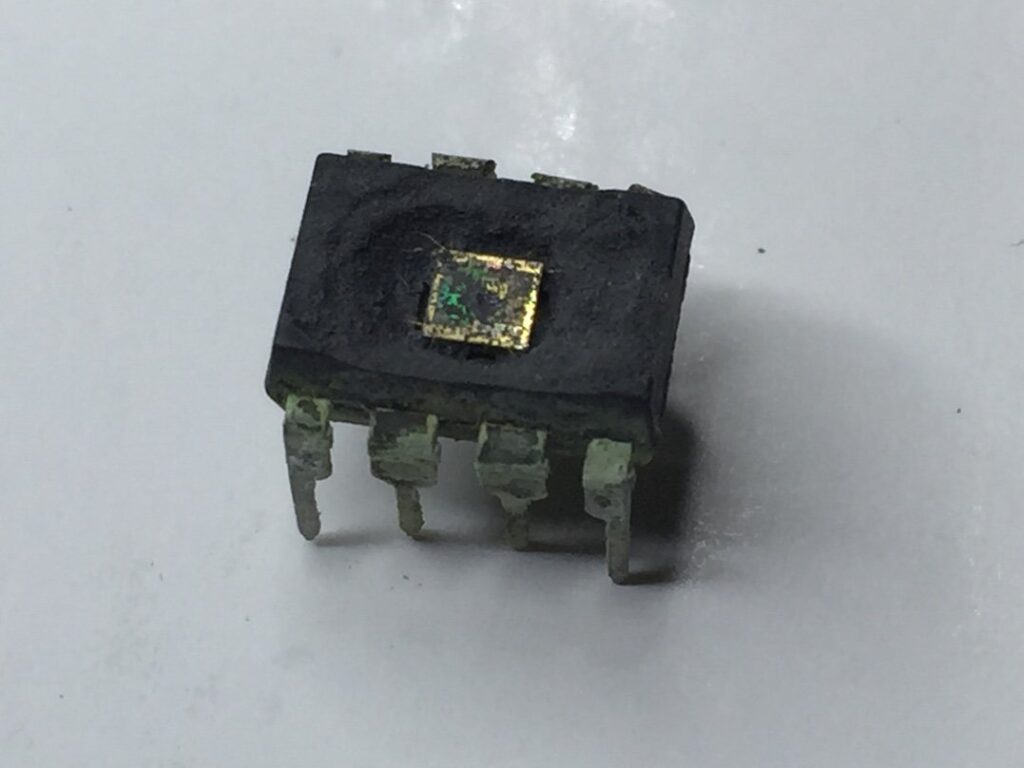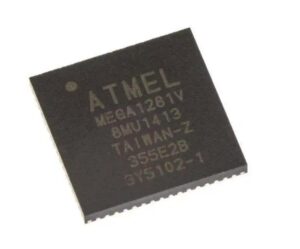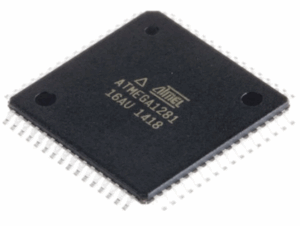 Recover Chip ATmega1281PV Source code
Recover Chip ATmega1281PV Source code
The ATmega1281 is a high-performance 8-bit microcontroller from Microchip’s AVR family, widely used in embedded systems that require reliable operation, low power consumption, and ample memory. It’s found in a range of applications including industrial control, robotics, wireless sensor networks, and automotive electronics. With built-in Flash, EEPROM, SRAM, and advanced protective features like lock bits and secure bootloader mechanisms, it presents a challenge to anyone attempting to recover, clone, or decode its firmware.

ATmega1281 to wydajny 8-bitowy mikrokontroler z rodziny AVR firmy Microchip, szeroko stosowany w systemach wbudowanych wymagających niezawodnej pracy, niskiego zużycia energii i dużej pamięci. Znajduje zastosowanie w wielu zastosowaniach, w tym w sterowaniu przemysłowym, robotyce, sieciach czujników bezprzewodowych i elektronice samochodowej. Dzięki wbudowanej pamięci Flash, EEPROM, SRAM i zaawansowanym funkcjom ochronnym, takim jak bity blokady i mechanizmy bezpiecznego bootloadera, stanowi wyzwanie dla każdego, kto próbuje odzyskać, sklonować lub zdekodować jego oprogramowanie układowe.
W CIRCUIT ENGINEERING CO.,LTD oferujemy zaawansowane usługi inżynierii wstecznej, aby pomóc klientom odzyskać kod źródłowy układu ATmega1281, szczególnie gdy oprogramowanie układowe lub dane programu zostały zablokowane, zaszyfrowane lub w inny sposób zabezpieczone. Niezależnie od tego, czy musisz odblokować, skopiować lub zduplikować plik binarny lub heksametalogowy z układu, zapewniamy rozwiązania na poziomie eksperckim, aby przełamać ochronę.
At CIRCUIT ENGINEERING CO.,LTD, we offer advanced reverse engineering services to help clients recover chip ATmega1281 source code, particularly when the firmware or program data has been locked, encrypted, or otherwise secured. Whether you need to unlock, copy, or duplicate a binary or heximal file from the chip, we provide expert-level solutions to break through the protection.
Recover Chip ATmega1281PV Source code from locked flash memory, copy embedded binary of mcu atmega1281pv to new MCU after crack mcu atmega1281pv fuse bit;
The phase and frequency correct Pulse Width Modulation, or phase and frequency correct PWM mode (WGMn3:0 = 8 or 9) provides a high resolution phase and frequency correct PWM waveform generation option.

The phase and frequency correct PWM mode is, like the phase correct PWM mode, based on a dual-slope operation. The counter counts repeatedly from BOTTOM (0x0000) to TOP and then from TOP to BOTTOM. In non-inverting Compare Output mode, the Output Compare (OCnx) is cleared on the compare match between TCNTn and OCRnx while upcounting, and set on the compare match while downcounting. In inverting Compare Output mode, the operation is inverted if Recover mcu pic16f873 hex.
The dual-slope operation gives a lower maximum operation frequency compared to the single-slope operation. However, due to the symmetric feature of the dualslope PWM modes, these modes are preferred for motor control applications.

hack ATMEGA1281 locked microprocessor fuse bit and copy heximal or binary file from flash program memory or eeprom memory data
The main difference between the phase correct, and the phase and frequency correct PWM mode is the time the OCRnx Register is updated by the OCRnx Buffer Register.
The PWM resolution for the phase and frequency correct PWM mode can be defined by either ICRn or OCRnA. The minimum resolution allowed is 2-bit (ICRn or OCRnA set to 0x0003), and the maximum resolution is 16-bit (ICRn or OCRnA set to MAX) after Recover tms320f2812pgfa microcontroller firmware.
The PWM resolution in bits can be calculated using the following equation: In phase and frequency correct PWM mode the counter is incremented until the counter value matches either the value in ICRn (WGMn3:0 = 8), or the value in OCRnA (WGMn3:0 = 9).
The counter has then reached the TOP and changes the count direction. The TCNTn value will be equal to TOP for one timer clock cycle. The timing diagram for the phase correct and frequency correct PWM mode is shown on Figure 57 if break microcontroller pic16f767 firmware.
Step-by-Step Procedure to Recover ATmega1281 Firmware
-
Chip Analysis & Protection Detection
We begin by identifying the protection mechanisms in place. The ATmega1281 supports several levels of code protection (e.g., LB1/LB2 lock bits). We use non-invasive or semi-invasive techniques to detect these protections before attempting any attack. -
Memory Dumping & Flash Extraction
Using advanced hardware programmers and glitching techniques (such as clock glitching or power analysis), we attempt to crack or hack into the device to dump the flash and EEPROM memory contents. -
Binary Firmware Extraction
Once we successfully access the chip, the firmware, typically in binary or hex format, is extracted. This step requires careful handling to avoid triggering security self-erasure or bricking the device. -
Firmware Decryption (If Encrypted)
If the firmware or data archive is encrypted, we deploy side-channel analysis or cryptographic pattern detection to decrypt the content. Our team may utilize signal timing analysis, fault injection, or brute-force cracking methods depending on the complexity. -
Disassembly and Source Code Recovery
The heximal data is then disassembled into assembly code, and with advanced decompilation tools, we restore it to a human-readable C/C++ source code as accurately as possible. -
Verification and Code Reconstruction
Finally, we analyze the functionality of the recovered program, reconstruct missing logic where necessary, and verify it against the original system behavior for accuracy.
The figure shows phase and frequency correct PWM mode when OCRnA or ICRn is used to define TOP. The TCNTn value is in the timing diagram shown as a histogram for illustrating the dual-slope operation. The diagram includes non-inverted and inverted PWM outputs.

ATmega1281, Microchip’in AVR ailesinden yüksek performanslı 8 bitlik bir mikrodenetleyicidir ve güvenilir çalışma, düşük güç tüketimi ve bol bellek gerektiren gömülü sistemlerde yaygın olarak kullanılır. Endüstriyel kontrol, robotik, kablosuz sensör ağları ve otomotiv elektroniği gibi çeşitli uygulamalarda bulunur. Dahili Flash, EEPROM, SRAM ve kilit bitleri ve güvenli önyükleyici mekanizmaları gibi gelişmiş koruyucu özelliklerle, aygıt yazılımını kurtarmaya, klonlamaya veya kodunu çözmeye çalışan herkes için bir zorluk teşkil eder.
CIRCUIT ENGINEERING CO.,LTD’de, özellikle aygıt yazılımı veya program verileri kilitlendiğinde, şifrelendiğinde veya başka bir şekilde güvenli hale getirildiğinde, müşterilerin çip ATmega1281 kaynak kodunu kurtarmalarına yardımcı olmak için gelişmiş tersine mühendislik hizmetleri sunuyoruz. Çipten ikili veya altıgen bir dosyayı kilidini açmanız, kopyalamanız veya çoğaltmanız gerekip gerekmediğine bakılmaksızın, korumayı aşmak için uzman düzeyinde çözümler sunuyoruz.
The small horizontal line marks on the TCNTn slopes represent compare matches between OCRnx and TCNTn. The OCnx Interrupt Flag will be set when a compare match occurs.
Applications and Unique Features of the ATmega1281
The ATmega1281 stands out for its 128KB of self-programmable Flash memory, 4KB of EEPROM, and 8KB of SRAM. Its 86 general-purpose I/O lines, internal oscillator, and robust peripheral set (SPI, I2C, UART, ADC, timers) make it ideal for sophisticated embedded control systems.
It is commonly used in:
-
Wireless mesh networking (Zigbee-based applications)
-
Industrial machine controllers
-
Data loggers and smart meters
-
Home automation and security devices
-
Custom automotive ECUs
These applications often require post-deployment updates or forensic analysis, which is only possible by accessing the secured firmware. That’s where our chip unlocking services come in.

ATmega1281 — это высокопроизводительный 8-битный микроконтроллер из семейства AVR компании Microchip, широко используемый во встраиваемых системах, которым требуется надежная работа, низкое энергопотребление и большой объем памяти. Он используется в различных приложениях, включая промышленное управление, робототехнику, беспроводные сенсорные сети и автомобильную электронику. Благодаря встроенной флэш-памяти, EEPROM, SRAM и расширенным защитным функциям, таким как биты блокировки и защищенные механизмы загрузчика, он представляет собой сложную задачу для любого, кто пытается восстановить, клонировать или декодировать его прошивку.
В CIRCUIT ENGINEERING CO.,LTD мы предлагаем расширенные услуги обратного инжиниринга, чтобы помочь клиентам восстановить исходный код чипа ATmega1281, особенно когда данные прошивки или программы были заблокированы, зашифрованы или иным образом защищены. Если вам нужно разблокировать, скопировать или дублировать двоичный или шестнадцатеричный файл с чипа, мы предоставляем экспертные решения для взлома защиты.